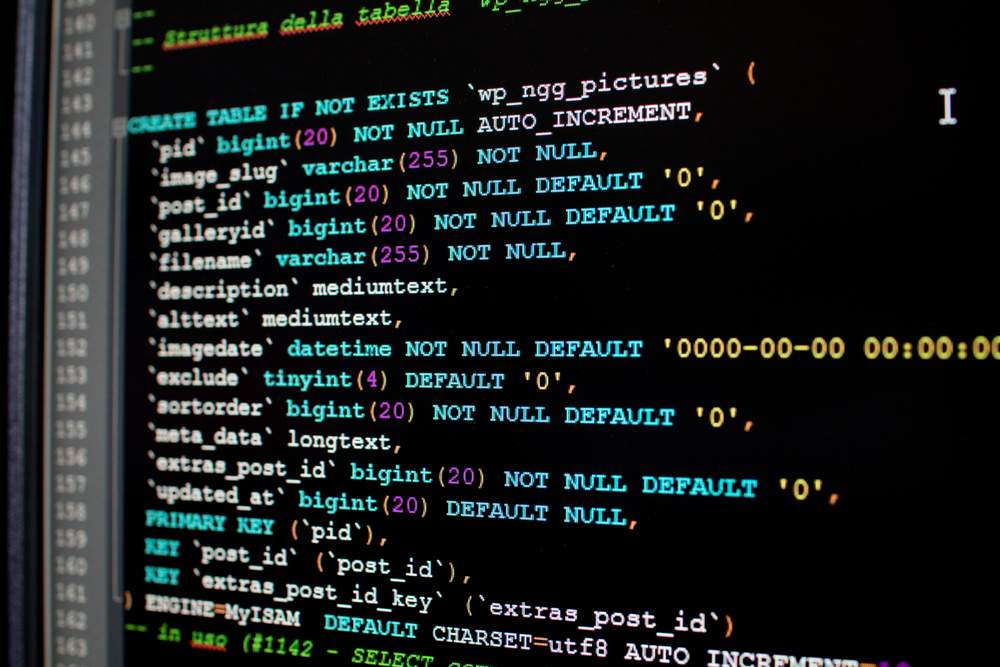What is a SQL injection (SQLi) attack and how can you prevent them?
SQL injection is a complex world, but it’s important for organizations to understand the impact and preventative measures. Read our guide.
SQL injection is a complex world, but it’s important for organizations to understand the impact and preventative measures. Read our guide.

How secure is your system? You may have locked the front door, but did you leave the back window unlatched? You could have provided bad actors with the perfect opportunity to conduct SQL injection – all without knowing.
If left unaddressed, this unguarded attack vector can cause an extensive list of devastating consequences.
No matter how small, a gap in your security system may allow attackers to manipulate database queries, gain unauthorized access to sensitive data, and disrupt your entire organization.
That’s why implementing robust security measures and minimizing the risk of SQL injection attacks is essential. This guide will cover everything you need to know, including:
A SQL injection attack is a type of cybersecurity vulnerability that targets web applications by interacting with databases. It occurs when an attacker exploits improper handling of user input within a web application’s SQL queries, allowing them to manipulate the application’s database or access sensitive information.
Wondering how it works? Let’s break it down.
When a web application dynamically generates SQL queries by concatenating user-supplied data without proper validation or sanitization, it creates an opening for SQL injection attacks. Bad actors can exploit this vulnerability by inputting specially crafted strings.
These strings contain malicious SQL commands through the application’s input fields or parameters. If the application fails to adequately validate or sanitize the input, the malicious SQL commands seamlessly integrate with the legitimate query.
Once successful, the consequences can be severe.
Attackers gain the power to execute arbitrary SQL commands, bypass authentication mechanisms, extract or modify sensitive data, and even take control over the entire database server.
This may lead to unauthorized access to accounts, exposure of Personally Identifiable Information (PII), financial losses, website defacement, and reputational damage.
The origins of SQL injection can be traced back to the late 1990s when web applications started to rely heavily on databases for data storage and retrieval. As websites began accepting user input without proper validation and sanitization, hackers discovered that they could exploit this vulnerability by inserting malicious SQL statements into input fields.
By doing so, attackers could bypass authentication, extract sensitive data, modify, or delete database records, and even execute arbitrary commands on the underlying server.
Over the years, SQL injection attacks have remained prevalent and damaging, leading to significant data breaches and financial losses for organizations worldwide.
The continuous evolution of web technologies, the increasing complexity of web applications, and the adoption of different database management systems have kept SQL injection attacks relevant.
SQL injection attacks can take on various forms, each exploiting different vulnerabilities within web applications. Here are some of the most common types of SQL injection attacks:
This is the most basic type of SQL injection attack and it occurs when an attacker injects malicious SQL code into a vulnerable application by manipulating user input. The injected code alters the intended behavior of the SQL query, enabling the attacker to perform unauthorized operations on the database.
An attacker leverages the application’s response to determine if the injected SQL code is executing successfully. By carefully constructing queries that generate true or false responses, the attacker can extract information or gain control over the database even without seeing the query results.
Error-based attacks exploit error messages and responses generated by the database to extract information. By injecting malicious SQL code that triggers an error, the attacker can obtain details about the database structure, table names, or specific data.
Union-based attacks take advantage of the UNION operator in SQL to combine the result sets of multiple SELECT statements. By injecting a crafted UNION statement, the attacker can retrieve data from other database tables or extract additional information not intended to be exposed.
Time-based attacks exploit the delay or timing differences in the database’s response to determine if the injected SQL code is executing. By injecting time-delayed SQL statements, the attacker can extract information or manipulate the database by observing the time it takes for the application to respond.
A type of vulnerability in web applications where user-supplied data is stored in a database and the malicious SQL code is executed later when the stored data is used in a different context. This can occur when the application fails to properly sanitize or validate the stored data.
SQL injection attacks exist due to various factors and vulnerabilities present in web applications. Here are some key reasons why SQL injection attacks continue to be a prevalent threat:
A SQL injection attack can have a severe impact on your organization. Here are some of the key consequences:
SQLi attacks can result in unauthorized access to sensitive data stored in databases. This can include PII of clients, financial records, intellectual property, trade secrets, or confidential business information.
A data breach can lead to legal liabilities, regulatory penalties, loss of client trust, and damage to the organization’s reputation.
SQLi attacks can cause direct financial losses resulting from stolen financial information, fraudulent transactions, or ransom demands from attackers.
They can also cause indirect losses, which arise from the costs associated with Digital Forensics and Incident Response investigations, legal actions, data recovery, and implementing enhanced security measures.
An attack can tarnish an organization’s reputation, erode client trust, and impact its brand image. The disclosure of a data breach or compromise can lead to negative media coverage, public scrutiny, and loss of existing and potential clients. Plus, rebuilding trust can be a long and challenging process.
Organizations are often subject to various legal and regulatory obligations regarding data protection and privacy. Data breaches can lead to legal and compliance issues, including violation of data protection laws, breach notification requirements, and potential lawsuits from affected individuals or regulatory bodies.
SQLi attacks can disrupt business operations, leading to system downtime, unavailability of services, or compromised functionality. This can impact employee productivity, client experience, and overall business continuity.
Organizations may incur additional costs for incident response, system restoration, and implementing security measures to prevent future attacks.
A SQLi attack can give competitors an advantage by damaging the targeted organization’s reputation, client trust, and brand value. Clients may choose to switch to competitors they perceive as more secure and trustworthy.
The loss of market share and decreased client loyalty can also have long-term consequences for the organization’s competitiveness and growth.
In 2015, hackers known as “The Impact Team” exploited a SQL injection vulnerability on Ashley Madison – a dating website that focused on facilitating extramarital affairs. By injecting malicious SQL code through input fields, they gained unauthorized access to the database and released the personal information of millions of users.
The breach had significant consequences, causing emotional distress, damaged relationships, and even instances of extortion.
The incident garnered widespread media attention and created a massive reputational crisis for Ashley Madison, resulting in a loss of trust and severe financial repercussions.
The Ashley Madison breach serves as a prominent example of how SQL injection attacks can have far-reaching consequences. Although the company suffered financial losses and legal implications, the attack also took a personal and emotional toll on clients.
Detecting SQL injection vulnerabilities requires a combination of manual code review and automated security testing. Here are some methods and techniques to help detect SQL injection vulnerabilities:
In the face of a SQL injection attack, acting swiftly and efficiently is of the essence. Here are key steps to take to mitigate damage and prevent further exploitation.
Preventing SQL injection attacks is all about outsmarting intruders before they have the chance to breach your defenses. Here’s what you should consider:
Understanding what a SQLi attack is and how it can affect your bottom line is crucial if you hope to enhance your security posture and safeguard your reputation. It is much easier to prevent the consequences of an attack than to recover from them.
By prioritizing security at every stage and continuously staying vigilant, you can protect your applications and databases from the damaging effects of SQL injection attacks. And, most importantly, ensure the confidentiality, integrity, and availability of your data.
Cyber attacks are a constant threat, which is why you should partner with a cybersecurity firm that offers persistent vigilance. CovertSwarm will help you identify potential breach points in your organization’s security before they materialize into significant threats. And they’ll do so incessantly.
To find out more about our Swarm, what we do, and how we can help your business, get in touch today.

Red teaming: everything you need to know
Get the inside scoop on everything you need to know about red teaming. Find out why it’s important for organizations and how we can help.

What is ethical hacking?
Read our guide about ethical hacking to find out what it is, why it’s important, its benefits and challenges and much more.

What is phishing and how can you prevent it?
Read our complete guide to learn what phishing is, different types of attack, how it works and how to prevent it